There is a season for everything. Some seasons of life need more planning. And making a weekly meal plan helps you stay prepared, organized and on budget. But then there are seasons where you can enter into a rhythm that runs efficiently. By having staples on hand and simple recipes at your fingertips you can have a no meal plan way to feed your family.
As an Amazon Associate I earn from qualifying purchases.
- Dial in your family’s favorite recipes and make a list of basic ingredients.
- Stock your pantry with basic dry goods and staples.
- Stock your freezer with nutrient dense proteins and vegetables.
- Stock your fridge with fresh components.
- Stick to those simple recipes your family loves.
- Add variety with spices and easy homemade sauces.
- Shop what is in season for best budget practices.

No Meal Plan Needed Requires Knowing Your Family’s Favorites to Begin
As you begin moving toward a no meal plan needed approach to feed your family, it helps to write down your family’s favorite simple meals that you enjoy together. Breakfasts, lunches, snacks, and dinners. Start with 10-12 ideas in each category.
From there you can look and see any common themes or ingredients. Perhaps a favorite protein or vegetable also. Being able to see these in a group allows your mind to view the process a little more systematically. For instance, our family really enjoys meals that have a Mexican or Asian flair. That means that things like soy sauce, fish sauce, and sesame oil, along with cumin, chili powder, and a good tortilla recipe will be staples in our home.
KEEP A MASTER LIST OF YOUR FRIDGE, FREEZER, AND PANTRY WITH THIS.
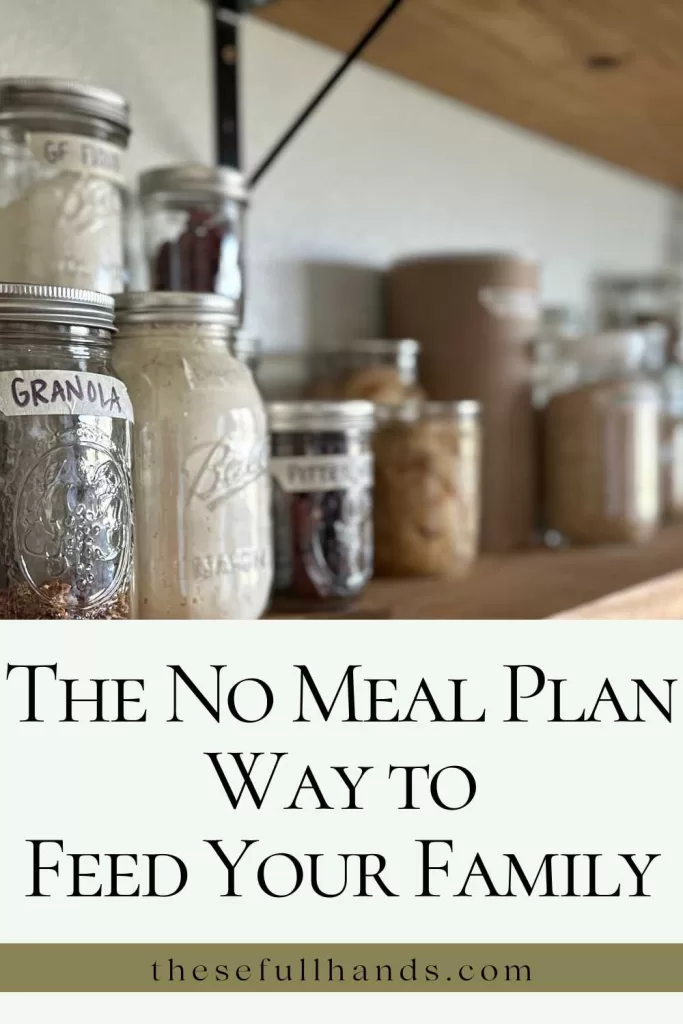
Stock Your Pantry With Basic Dry Goods and Staples
After you have made your list of favorite meals, start another column with key ingredients needed to prepare those meals. They don’t have to be from-scratch components, although it can really help your budget overall as you learn to make more foods from scratch. Perhaps you start with stocking your pantry with jarred sauces and pastas. That is wonderful! Having a basic list to start with will be very beneficial to you not needing to make a meal plan. Or extra trips to the store!
Some basics and staples to consider would be oats, pastas, dry/canned beans, lentils, coconut milk, tomato sauce/paste, diced tomatoes, jarred sauces like pizza and pasta sauce, and your baking staples like flour, sugars, baking power, baking soda, and salt.
Another budgeting strategy would be to set aside $20-30 per month (or whatever you decide) to spend on just stocking your pantry. Keeping an eye out for sales can maximize your bang for your buck.
If you know how to can your own foods, you can also strategize this by purchasing fresh food on sale or clearance and canning it for pantry storage.
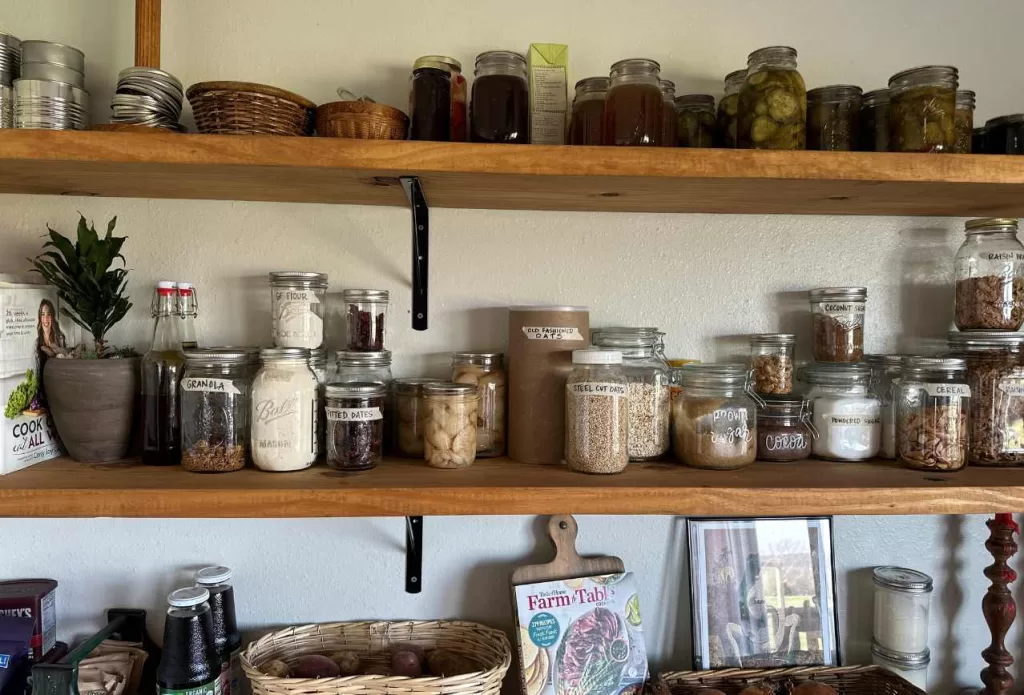
No Meal Plan Needed to Feed Your Family When You Stock Your Freezer with Nutrient Dense Proteins and Vegetables
Having a freezer full of proteins and produce frozen at peak freshness gives you so much opportunity for putting meals together. This can be done a couple of different ways. You can start with the freezer space you have and prepare heat-and-eat freezer meals, crockpot freezer meals, or semi-prepared meal items like cooked ground beef.
Then there is always buying bulk meat from a butcher. However your space may be quite limited unless you have a deep freeze or upright freezer. Perhaps even going in with friends or family and buying the deep freezer together. Then you can split the cost of a whole or half beef, or hog. Divide the meat in the freezer and you have access to great quality protein at a great price!
Another option is purchasing meat that has been discounted and saving it for later. I often do this with things like chicken drumsticks or pork tenderloins. Just be sure to practice food-safe protocols with re-freezing previously frozen meat.
REUSABLE FREEZER BAGS
LARGE FREEZER STORAGE CONTAINERS
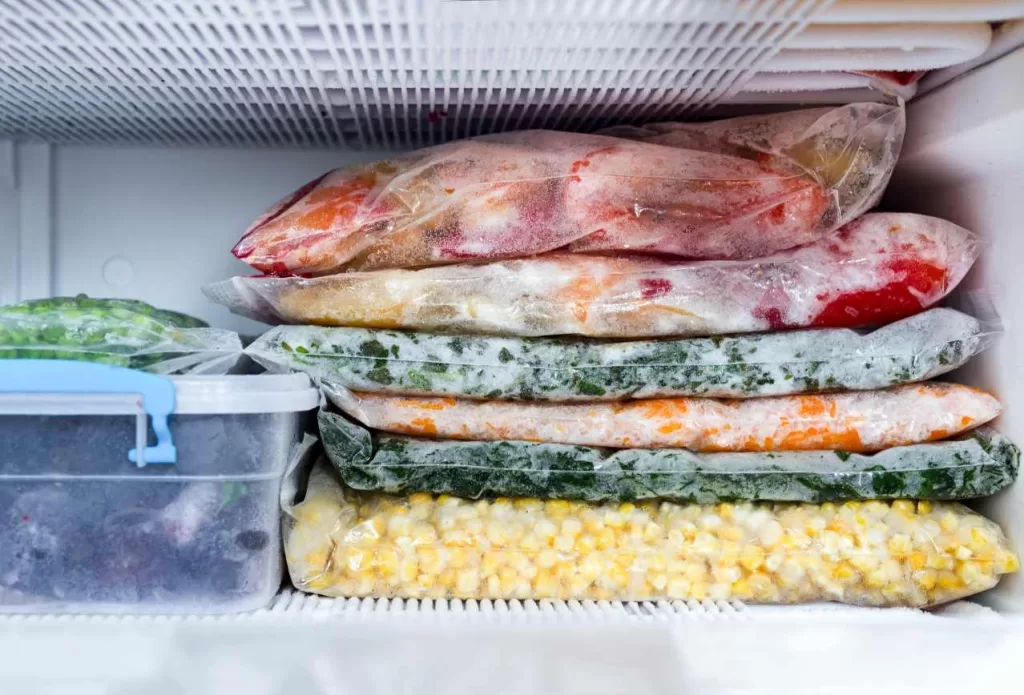
Fill Your Fridge with Fresh Components
This is another place that you will have staples and new components. For instance, fruits your family enjoys every week. Things like bananas, oranges, and apples are a weekly staple for us. But having a stocked pantry and freezer allows you to also shop the in-season and sale produce and fresh ingredients. You can really take advantage of the marked down items and let those components inspire and lead your cooking for the week.
This also includes things like cheeses and other dairy products, perhaps lunch meats or grilling meats, and so on.
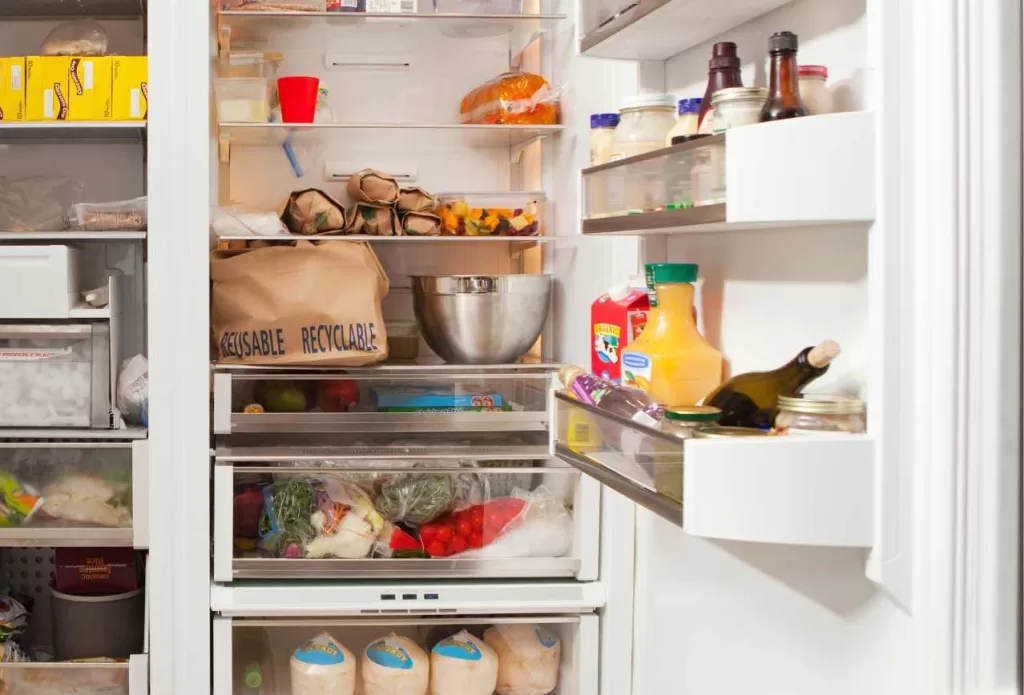
BONUS TIP: By washing, cutting, and preparing your produce when you bring it home you will be more likely to use it and not have food waste. Your vegetables can be chopped or diced and ready to throw into a meal, saving you time when everyone is hungry. It also can help keep it fresher, longer.
A No Meal Plan Needed Way to Feed Your Family Sticks to Simple Meals
With resources like Pinterest and IG reels, it can be hard to resist trying out new recipes and flavor combinations. And by all means, try them! Maybe a new family tradition would be to try a completely new recipe once a month and make a whole experience out of it. Get the kids involved with shopping for the ingredients, and prepping or serving the meal.
However, when it comes to stocking a home with ingredients to be able to create flavorful, delicious, nourishing meals any night of the week, AND keeping a budget, simplicity is your friend.
Some families implement weekly meals like Taco Tuesday or Breakfast for Dinner Sunday. We enjoy biscuits and gravy just about every Sunday night so we can be sure to use up any extra milk we have before our raw milk pickup on Monday evenings. Having a consistent meal like this can really help save money, and your sanity.

Simple doesn’t mean boring though! Base ingredients like chicken breast, noodles, and garlic can be transformed into something Italian, something Asian, something Greek, and something American – just by changing up some spices and sauces!
Add Variety with Spices and Homemade Sauces.
This is another area where simple components can be combined to make a ton of varieties. When you are buying pre-mixed spice blends and depending on them for meals, you may end up using a specialty blend once or twice before it expires. Or you run out when you need it and find yourself without the staples to just mix your own. Keeping things like garlic and onion power, cumin, chili powder, oregano, basil, thyme, sage, cinnamon, cloves, paprika, bay leaves, and salt & pepper stocked give you SO many options to flavor a meal.
As for sauces, simplicity is your friend. When you are cooking meats, knowing how to deglaze a pan, build a roux, and make a simple gravy can give you so many options for making a delicious sauce or gravy to serve with your meal.
From there, knowing how to make a couple of salad dressings, sandwich sauce or mayo, ketchup, BBQ sauce, or a Greek style dressing can add variety and flavor to simple ingredients. If making sauces from scratch isn’t your jam yet, then narrow down your families favorites and be sure to always keep one in the pantry on standby, and one in the fridge.
Other things to consider stocking or learning how to make include simple syrups with fruit infusions, jellies or jams, pancake syrup, chocolate syrup, and really, anything that your family eats weekly. Don’t worry about stocking specialty ingredients for that rare splurge or treat. Keep those for special occasions and plan accordingly.
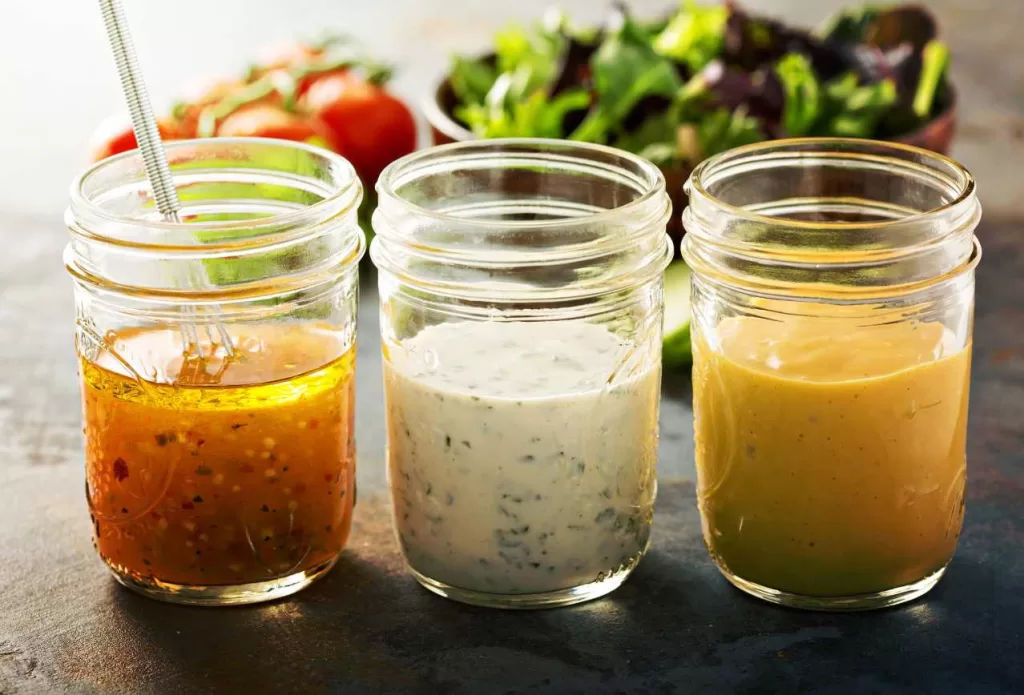
Shop – OR GROW – What is In Season for Best Budget Practices
This takes some practice and shifting your habits. Because we can walk into a grocery store and buy just about anything at anytime doesn’t mean we are getting the best price or product. Adjust your approach to meals seasonally and you will boost the nutritional and economic value of your foods.
Seasonal foods will vary slightly depending on where you live, but here is a good starting point. Let me also encourage you to start growing some of your own seasonal produce if you don’t already. Start small with half a dozen foods your family enjoys and add more each season. Then, you can learn how to preserve some of these foods by either freezing, dehydrating, canning, or fermenting. That way you can enjoy fresh, nutrient dense foods on their off season.

This no meal plan approach to feed your family won’t happen overnight! Be patient with yourself and ease into it. Start with a month of “meal plans” and use your budgeted money for stocking your pantry by doubling some of your purchases. Maybe instead of 5 pounds of ground beef you purchase 8 and keep 3 in the freezer. Two boxes of pasta instead of one. And 4 jars of sauce instead of 2.
Then, as you rotate through those weeks of a plan, you get into a rhythm of knowing your proteins, vegetables, and starches. Then, a couple nights a week you start pulling things together from shopping your kitchen and pantry. Have fun with it!
You don’t have to go zero to ninety on your homemade or from-scratch cooking. Start slow and small. Try learning one or two replacements at time. Feeding your family well isn’t an aesthetic to achieve.
Its about stewarding well and meeting the basic need of the people God gave you. It SHOULD be nutritious and flavorful. God gave us the senses to enjoy the things He created on this earth. He created our bodies to be FUELED by these foods. And He gave us families to share and enjoy it all with.
Do your best and enjoy the process. It is glorifying to God to feed your family well with all that He has provided.




Hello!
Good cheer to all on this beautiful day!!!!!
Good luck 🙂
Thanks!
It’s nice to be able to mix it up and do whatever works in different seasons of life. It keeps feeding the family from being a stressful thing, or constantly resorting to takeout.
This is soooo me! I meal plan sporadically. I just make sure I have some meat defrosted and see what needs to be used up in the fridge.
Love the way you organize your kitchen pantry and freezer, great info too!